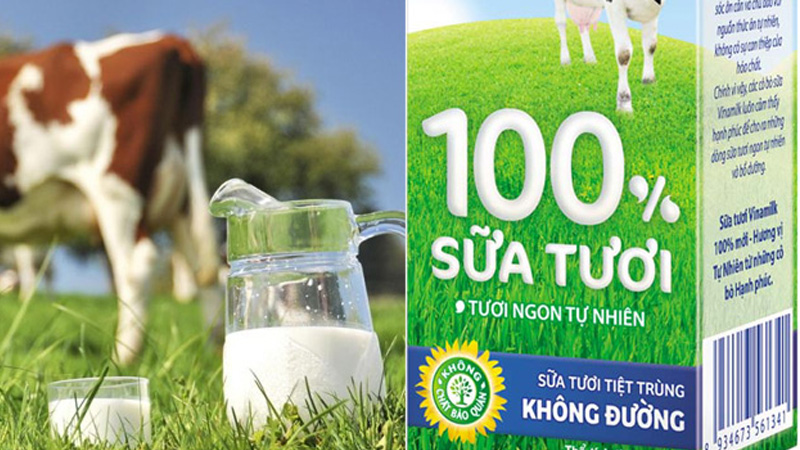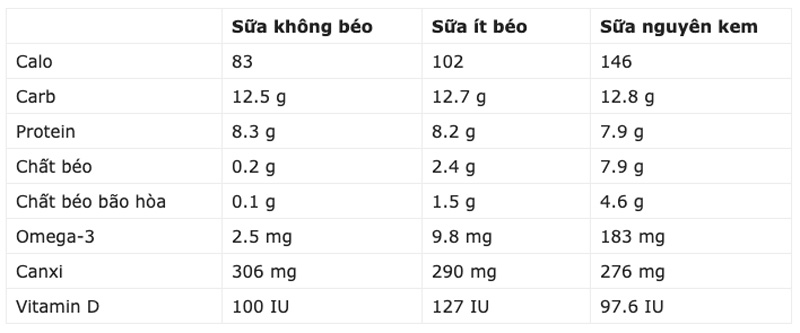The term “fresh milk” is quite generic, but due to its characteristics and production technology, fresh milk can be categorized into several types: pasteurized milk, sterilized milk, whole milk, skimmed milk, and semi-skimmed milk. Do you know the differences between them? Let’s explore and classify them!
1 Pasteurized Milk

Pasteurized milk is 100% pure fresh milk. It is produced using modern pasteurization technology, by quickly heating the milk to 90 degrees Celsius for 30 seconds and then rapidly cooling it to 4 degrees Celsius. This process eliminates harmful bacteria and fungi while preserving the natural protein and nutrient content from the fresh cow’s milk used as raw material.
One drawback of pasteurized milk is that it does not completely eradicate all bacteria, resulting in a shorter shelf life (typically around 7-10 days) and the need for continuous cold storage at 3-5 degrees Celsius, whether the package is opened or not.
Due to its perishable nature, pasteurized milk is suitable for consumption at home or in environments with refrigerators. It is not recommended for outdoor activities, school lunches, etc.
2 Sterilized Milk

Similar to pasteurized milk, sterilized milk also starts with 100% pure fresh milk.
The difference lies in the sterilization process. Sterilized milk undergoes UHT (ultra-high temperature) processing, where the milk is heated to 140 degrees Celsius for approximately 4-6 seconds and then rapidly cooled. This method ensures the destruction of all harmful bacteria and yeast.
Thanks to sterilization, sterilized milk has a longer shelf life of about six months and does not require refrigeration. It only needs to be stored away from high temperatures and direct sunlight.
As it is treated at a higher temperature, sterilized milk may experience a slight loss of some vitamins and nutrients, but this is insignificant and still provides a rich source of supplementary nutrition for the body.
3 Whole Milk

Whole milk is produced from 100% pure fresh cow’s milk, without any additions or removals of components, including the creamy layer of milk fat.
The fat content in whole milk is standardized and homogenized to a minimum of 3.5% (higher than all other types of milk), resulting in a richer, creamier mouthfeel that may leave a slight oily residue on the mouth and glass.
By retaining all the natural nutrients, including the milk fat, whole milk provides an abundant source of not just fat and energy but also protein, calcium, and other nutrients essential for physical development.
Like pasteurized and sterilized milk, whole milk requires refrigeration.
4 Skimmed and Semi-Skimmed Milk

Skimmed and semi-skimmed milk are produced from 100% pure fresh milk that has undergone a fat removal process using centrifugal technology. The amount of fat removed depends on the manufacturer.
The separated fat is then processed to create a cream product, while the remaining milk becomes skimmed milk.
Skimmed milk has the advantage of a lower fat content, typically ranging from 0-2%. This results in a less creamy taste, reducing the amount of fat consumed, making it suitable for those on a diet or aiming to lose weight.
For the same volume, skimmed milk provides fewer calories and fat but offers a richer source of calcium and protein.
The following table summarizes the nutritional content of a cup (237ml) of each type of milk:

However, it is important to note that the fat removal process also reduces some beneficial saturated fats and a portion of vitamins A and K. Nonetheless, the overall nutrient content in skimmed milk remains substantial and can adequately supplement a balanced diet.
Understanding the different types of fresh milk available in the market empowers consumers to make informed choices and use milk according to their individual and family nutritional needs.






























